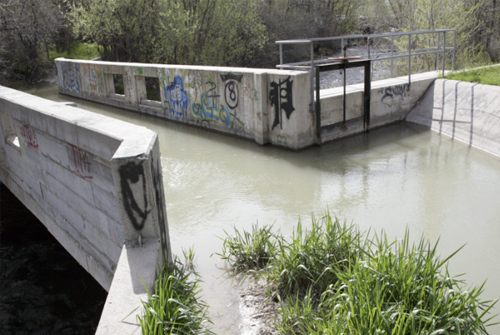
Irrigation has been a fundamental part of Salt Lake City and County's historical development. Beginning in 1847 municipal authorities harnessed surface water to irrigate crops and provide culinary water. The Jordan River was one such early source.
In 1855 Salt Lake City authorized a canal "with a depth sufficient for boats drawing 2 1/2 feet of water" to take water out of the Jordan River at the Narrows at an elevation sufficient for it to flow by gravity to the city. Construction of the Jordan and Salt Lake Canal started in 1879 and was completed in 1882. Most construction was done by hand labor, although workers occasionally were able to use a go-devil.
Besides bringing Utah Lake water via the Jordan River to Salt Lake City, the Jordan and Salt Lake Canal allowed the city to enter into exchange agreements with irrigation companies with senior rights to water in canyon creeks. The first such agreement, the 1888 Parleys Exchange, enabled the city to swap lower quality Jordan River water that Parleys irrigators still could use for growing crops for water from Parleys Creek. Both the city and irrigators profited from the deal. The city could use higher quality Parleys Creek water for culinary purposes and irrigators had access to late season irrigation water that the city stored in Utah Lake through other adjudicated agreements. Eventually, with water rights stored in Utah Lake and pumped into the Jordan River, the city used the canal to enter into exchange agreements with irrigators using Mill Creek, Big Cottonwood and Little Cottonwood surface water, providing Salt Lake City with 65,000 acre-feet of culinary water annually.
Still in operation, the Jordan and Salt Lake Canal is 28 miles long, dropping one foot per mile. The canal is above ground until 3400 South, when it becomes buried in a pipe. Irrigation from the canal stops at 8th South, where most canal water is dumped into culverts that convey it back to the Jordan River. Eventually, the canal terminates at the intersection of State Street and North Temple, where any remaining water flows into the City Creek Conduit. There are still a few irrigators with water rights in downtown Salt Lake City.
 View Jordan and Salt Lake Canal Gallery
View Jordan and Salt Lake Canal Gallery
